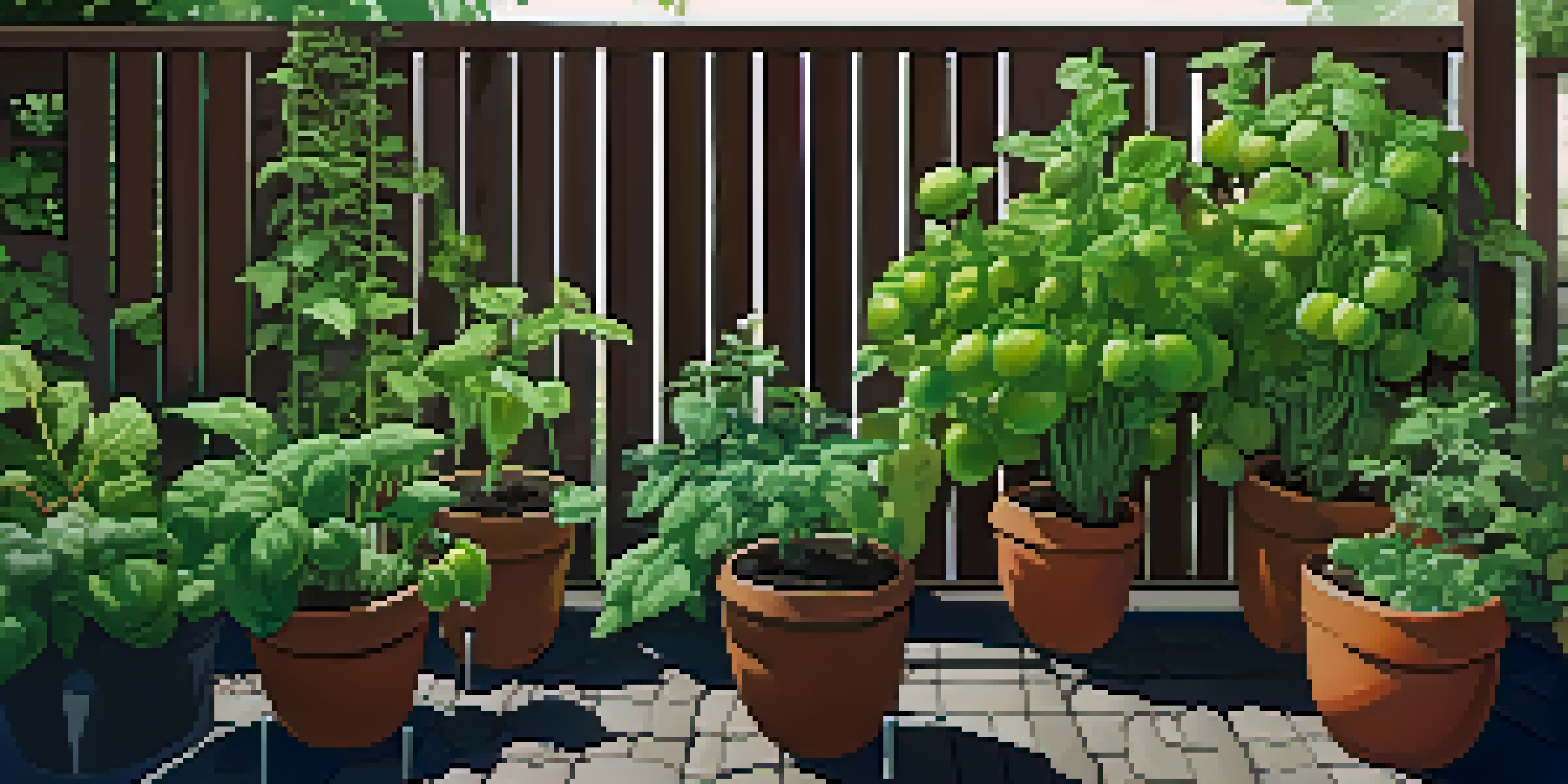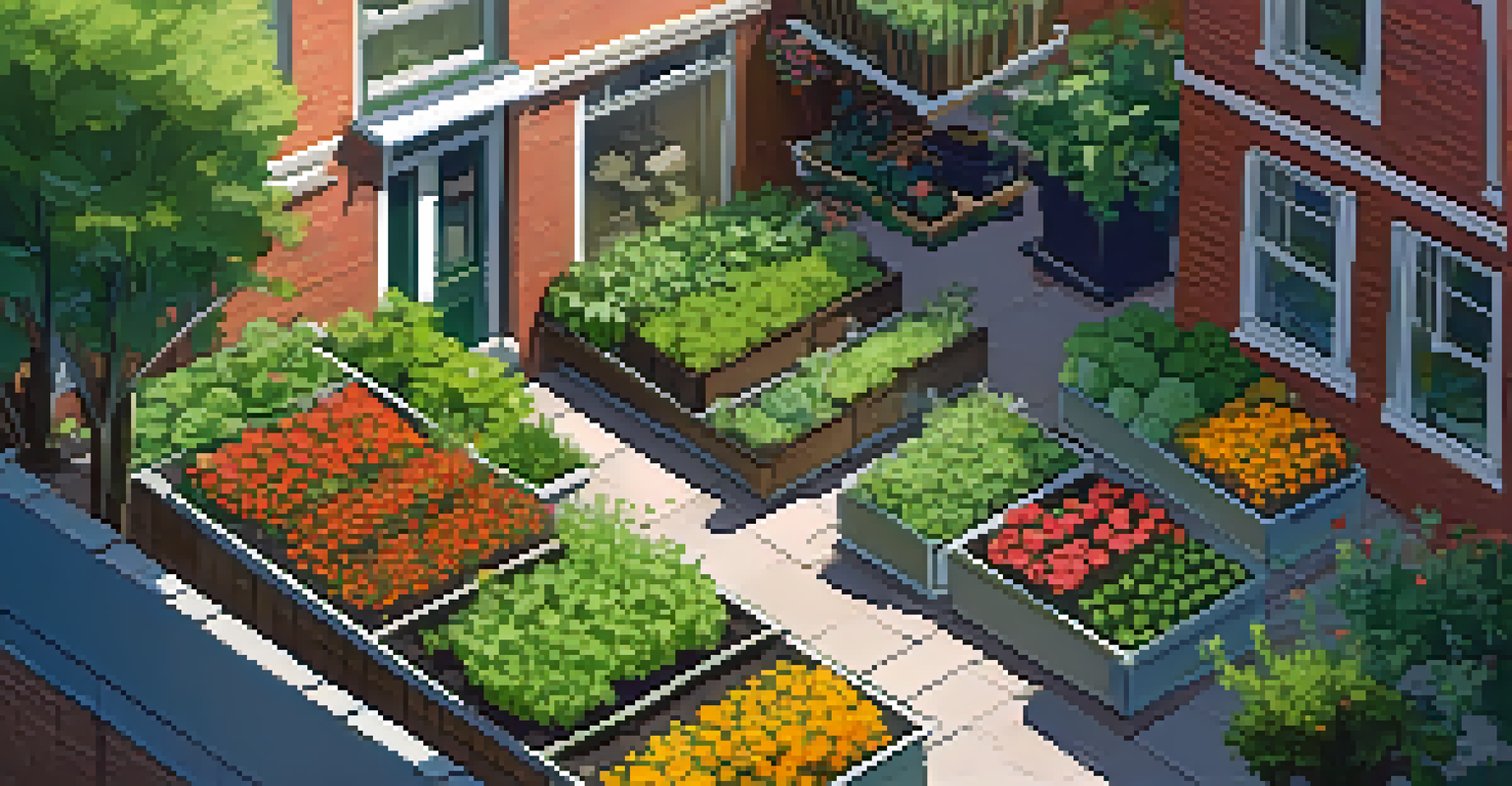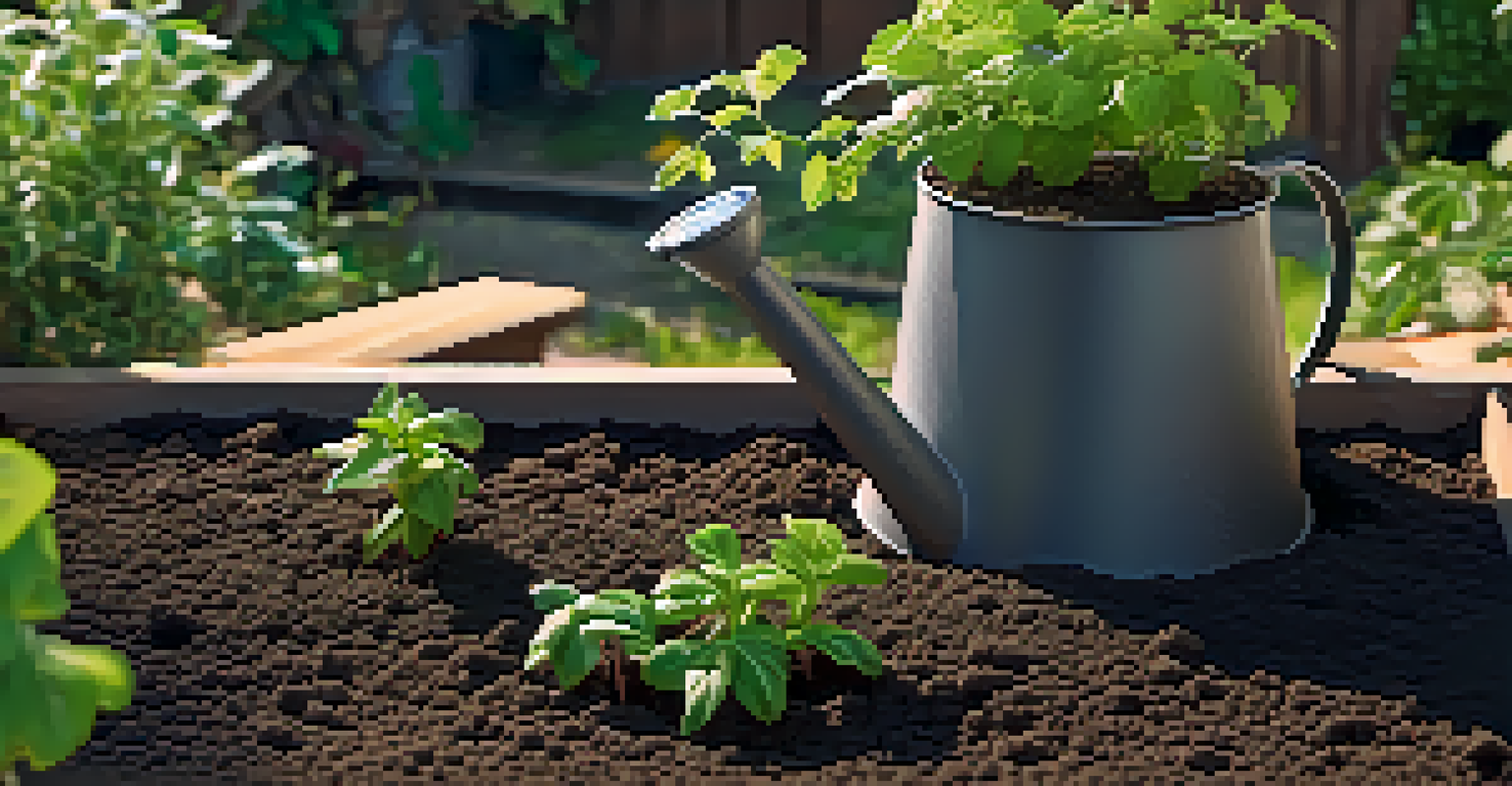Common Mistakes in Small Space Gardening and How to Avoid

Neglecting Proper Planning for Your Garden
One of the first steps in small space gardening is proper planning. Without a clear layout, you might end up overcrowding your plants, which can lead to competition for sunlight and nutrients. Take time to sketch out your garden space, considering the size and growth habits of each plant.
The best time to plant a tree was twenty years ago. The second best time is now.
For example, if you're planting tomatoes, they need ample space to grow tall and bushy, while herbs like basil can thrive in smaller pots. Think about the heights and widths of your plants to create a balanced and visually appealing garden. Planning will save you time and frustration down the road.
Additionally, keep in mind the seasons and how they affect your garden. Seasonal planning can help you stagger your planting and harvesting, which maximizes your yield in limited space.
Ignoring the Importance of Soil Quality
Soil quality is the foundation of a successful garden, yet many small space gardeners overlook it. Poor soil can lead to stunted growth and less flavorful produce. It's essential to invest in good-quality potting mix or amend your existing soil with compost to provide the necessary nutrients.

Think of soil as the buffet table for your plants; if it’s lacking in nutrients, they won’t thrive. Conduct a soil test to determine pH levels and nutrient content, which will guide you in making the right amendments. This simple step can make a world of difference in your garden's health.
Plan Your Garden Layout Carefully
Proper planning prevents overcrowding and ensures each plant has enough space to grow and thrive.
Remember, healthy soil leads to strong plants. When your plants are flourishing, you’ll be more motivated to keep nurturing your small space garden.
Overwatering or Underwatering Your Plants
Finding the right balance when it comes to watering can be tricky, especially in small space gardening. Too much water can drown roots, while too little can dry them out. Understanding the needs of your specific plants is crucial for maintaining their health and vitality.
Gardening is not a task; it's a way of life.
A good rule of thumb is to check the top inch of soil before watering. If it feels dry, it’s time to give your plants a drink. Consider using self-watering pots or drip irrigation systems to help regulate moisture levels, making it easier to maintain the perfect environment for your plants.
Keep an eye on the weather as well; hot, sunny days may require more frequent watering while cooler, rainy days might mean you skip it altogether. Being attentive to these details will help your plants thrive.
Choosing the Wrong Plants for Your Space
Selecting the right plants can make or break your small space garden. Many novice gardeners choose plants based solely on aesthetics, ignoring their growth requirements and space needs. Researching plant characteristics is vital to ensure that your choices align with your available space and conditions.
For instance, large plants like squash or sunflowers can quickly take over a small area. Instead, opt for compact varieties or plants that grow vertically, such as pole beans or climbing tomatoes. This not only saves space but also adds visual interest to your garden.
Quality Soil is Essential for Growth
Investing in high-quality soil and nutrients is crucial for healthy plants and flavorful produce.
Don't forget to consider your climate when selecting plants. Choosing plants suited to your local environment will boost your chances of success and reduce maintenance efforts.
Failing to Utilize Vertical Space
In small space gardening, vertical gardening can be a game changer. Many gardeners make the mistake of only using horizontal space, missing out on the potential of upward growth. By incorporating trellises, wall planters, or hanging baskets, you can maximize your gardening area.
Think of it as a three-dimensional puzzle; the more layers you create, the more plants you can fit in. Climbing plants like cucumbers or peas can grow vertically, freeing up ground space for other crops. This technique not only increases your yield but also adds a beautiful aesthetic to your garden.
Moreover, vertical gardening can improve air circulation around your plants, reducing the risk of disease and pests, which is an added bonus in tight spaces.
Overlooking Sunlight Needs of Plants
Different plants have different sunlight requirements, and failing to match them to your garden's light conditions can lead to disappointing results. Many small space gardeners mistakenly place all their plants in one spot without considering how much sun that area receives throughout the day.
To avoid this pitfall, observe your garden space at different times to see how sunlight moves. Some plants thrive in full sun, while others prefer partial shade. For instance, leafy greens can tolerate some shade, while flowering plants like zinnias crave full sun.
Match Plants to Sunlight Needs
Grouping plants based on their sunlight requirements leads to better growth and a more productive garden.
By grouping plants based on their sunlight needs, you’ll improve their growth and overall health, resulting in a more productive garden.
Neglecting Pest Management Strategies
Pest management is essential for any garden, but small space gardeners often overlook it. These tiny invaders can quickly wreak havoc on your plants, especially when they're crammed together. Implementing preventative measures can save you a lot of headaches.
Consider introducing beneficial insects like ladybugs or using companion planting to deter pests naturally. For example, planting marigolds alongside vegetables can help repel aphids. You can also use physical barriers, like row covers, to protect your plants from unwanted guests.

Regularly inspecting your plants for signs of pests or disease is crucial. Early detection can prevent a small problem from turning into a full-blown infestation, ensuring your garden remains healthy and vibrant.
Failing to Rotate Crops Each Season
Crop rotation is a technique that many small space gardeners forget, yet it plays a vital role in maintaining soil health and preventing diseases. By planting different crops in the same area each season, you can disrupt pest and disease cycles and improve soil fertility.
For example, if you grew tomatoes in one spot this year, consider planting legumes next year to enrich the soil with nitrogen. This practice not only helps your plants thrive but also keeps your garden dynamic and interesting.
Keeping a gardening journal can be beneficial for tracking what you plant where each season. This way, you can easily plan your crop rotation and ensure that your small space garden remains productive and healthy year after year.